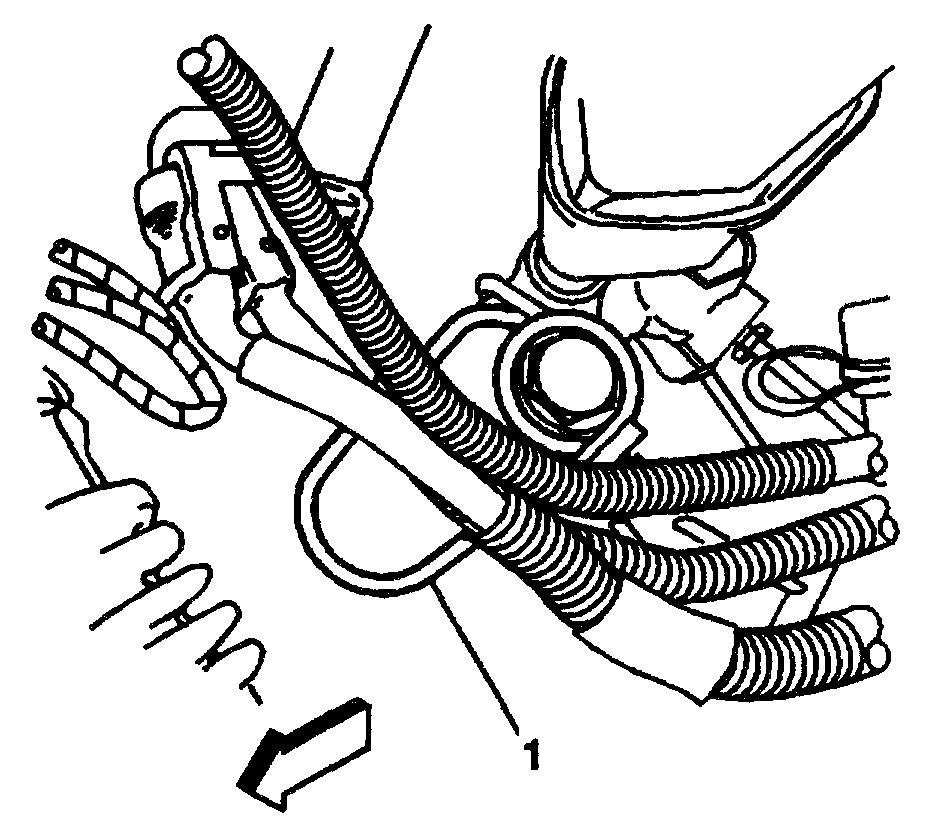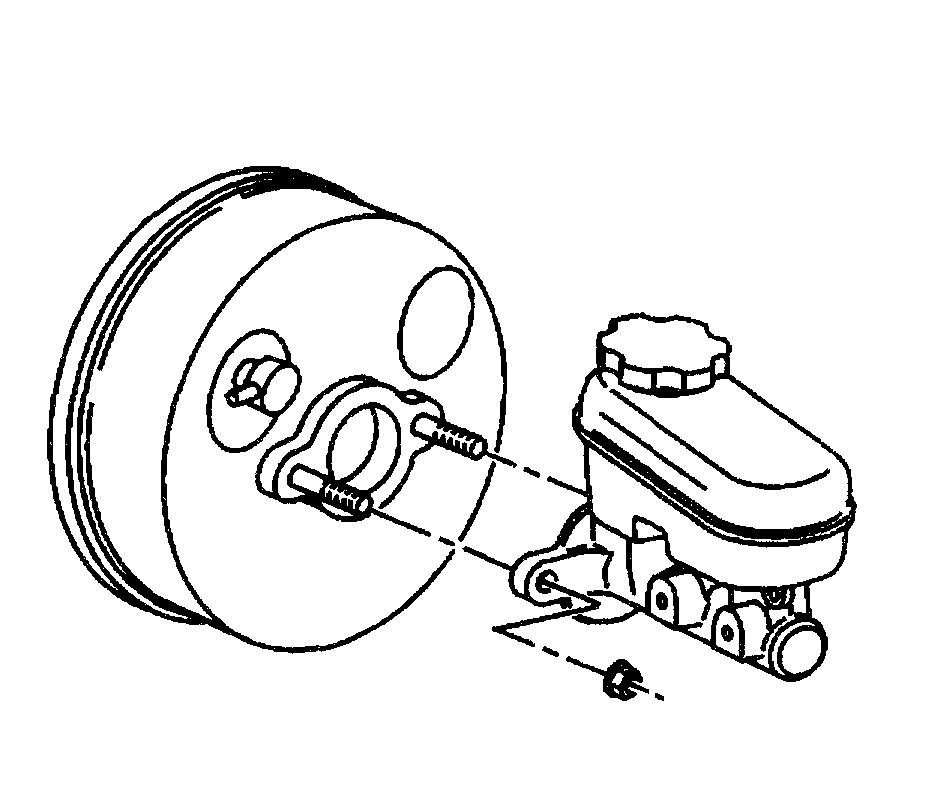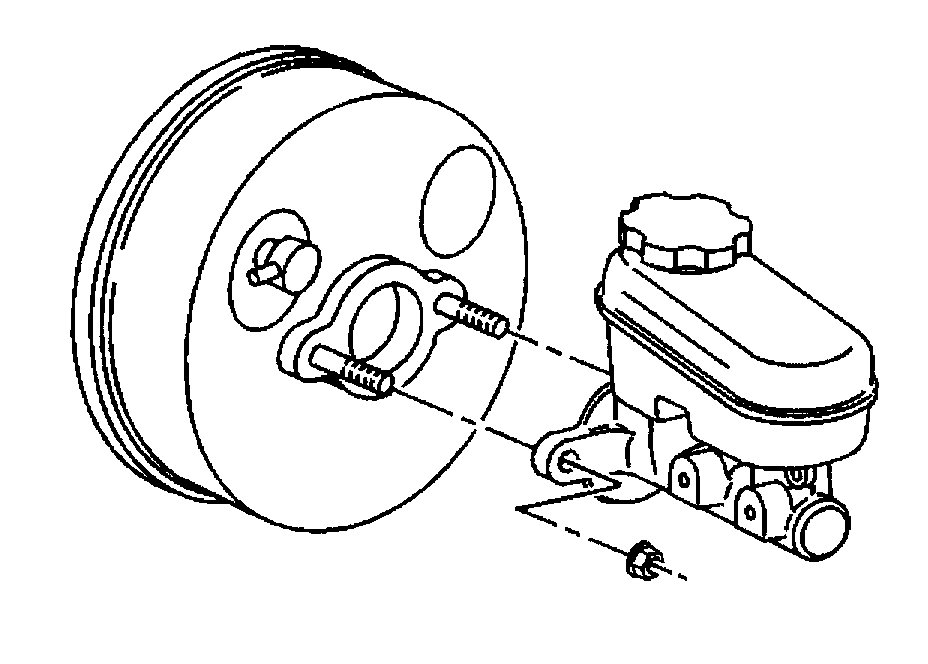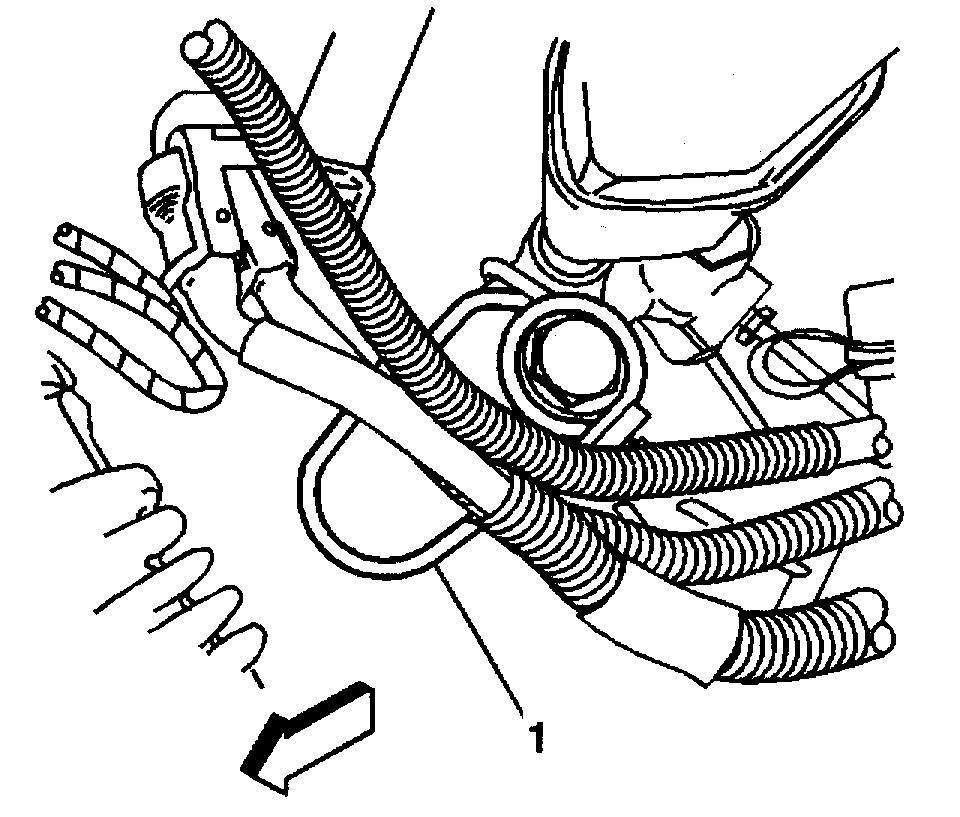Hi,
Tom, chances are the master cylinder is bad. When the vehicle starts, you get a vacuum assist from the brake booster which makes it much easier to press the brakes. Try this. With the engine off, press the brake pedal and keep pressure on it for a bit. See if it slowly starts to go down.
Here is a link you may find of interest:
https://www.2carpros.com/articles/brake-pedal-goes-to-the-floor
Since there are no leaks, what I feel is happening is the brake fluid is bypassing the plungers in the master cylinder. It is just much more noticeable when the engine is running.
If you decide to replace the master cylinder, here is a link that explains how it's done:
https://www.2carpros.com/articles/how-to-replace-a-brake-master-cylinder
Here are the directions specific to your vehicle. The attached pics correlate with these directions.
_______________________________
2004 Chevrolet Impala V6-3.4L VIN E
Master Cylinder Replacement
Vehicle Brakes and Traction Control Hydraulic System Brake Master Cylinder Service and Repair Procedures Master Cylinder Replacement
MASTER CYLINDER REPLACEMENT
Master Cylinder Replacement
Removal Procedure
pic 1
1. Disconnect the electrical connector from the brake fluid level sensor.
2. If you are performing repairs on a 3.4L, non ABS Impala, it is necessary to remove the bracket (1) from the master cylinder.
3. Disconnect the brake pipes from the master cylinder.
Important: Install a rubber cap or plug to the exposed brake pipe fitting ends in order to prevent brake fluid loss and contamination.
4. Plug the open brake pipe ends.
pic 2
5. Remove master cylinder mounting nuts.
6. Remove the master cylinder from the vehicle.
7. Drain the master cylinder reservoir of all brake fluid.
Installation Procedure
pic 3
1. Bench bleed the master cylinder.
2. Install the master cylinder to the vacuum brake booster.
Notice: Refer to Fastener Notice in Service Precautions.
3. Install the master cylinder mounting nuts.
Tighten the master cylinder mounting nuts to 25 Nm (18 ft. lbs.).
4. Remove the plugs from the brake pipes
5. Connect the brake pipes to the master cylinder.
Tighten the brake pipe fittings at the master cylinder to 15 Nm (11 ft. lbs.).
pic 4
6. If you are performing repairs on a 3.4L, non ABS Impala, it is necessary to install the bracket (1) to the master cylinder.
7. Connect the electrical connector to the brake fluid level sensor.
8. Bleed the brake system.
____________________________________
Here are directions for Bench Bleeding the new master cylinder. This will be done prior to installing it on the vehicle.
___________________________________
2004 Chevrolet Impala V6-3.4L VIN E
Master Cylinder Bench Bleeding
Vehicle Brakes and Traction Control Hydraulic System Brake Bleeding Service and Repair Procedures Master Cylinder Bench Bleeding
MASTER CYLINDER BENCH BLEEDING
Master Cylinder Bench Bleeding
Notice: When adding fluid to the brake master cylinder reservoir, use only Delco Supreme II (R), GM P/N 12377967 (Canadian P/N 992667), or equivalent DOT-3 brake fluid from a clean, sealed brake fluid container. The use of any type of fluid other than the recommended type of brake fluid, may cause contamination which could result in damage to the internal rubber seals and/or rubber linings of hydraulic brake system components.
pic 5
1. Secure the mounting flange of the brake master cylinder in a bench vise so that the rear of the primary piston is accessible.
2. Remove the master cylinder reservoir cap and diaphragm.
3. Install suitable fittings to the master cylinder ports that match the type of flare seat required and also provide for hose attachment.
4. Install transparent hoses to the fittings installed to the master cylinder ports, then route the hoses into the master cylinder reservoir.
5. Fill the master cylinder reservoir to at least the half-way point with Delco Supreme II (R), GM P/N 12377967 (Canadian P/N 992667), or equivalent DOT-3 brake fluid from a clean, sealed brake fluid container.
6. Ensure that the ends of the transparent hoses running into the master cylinder reservoir are fully submerged in the brake fluid.
7. Using a smooth, round-ended tool, depress and release the primary piston as far as it will travel, a depth of about 25 mm (1 inch), several times. Observe the flow of fluid coming from the ports.
As air is bled from the primary and secondary pistons, the effort required to depress the primary piston will increase and the amount of travel will decrease.
8. Continue to depress and release the primary piston until fluid flows freely from the ports with no evidence of air bubbles.
9. Remove the transparent hoses from the master cylinder reservoir.
10. Install the master cylinder reservoir cap and diaphragm.
11. Remove the fittings with the transparent hoses from the master cylinder ports. Wrap the master cylinder with a clean shop cloth to prevent brake fluid spills.
12. Remove the master cylinder from the vise.
____________________________________
Let me know if this helps or if you have other questions.
Take care and let me know if I can help.
Joe
Images (Click to make bigger)
Friday, March 12th, 2021 AT 11:01 AM






